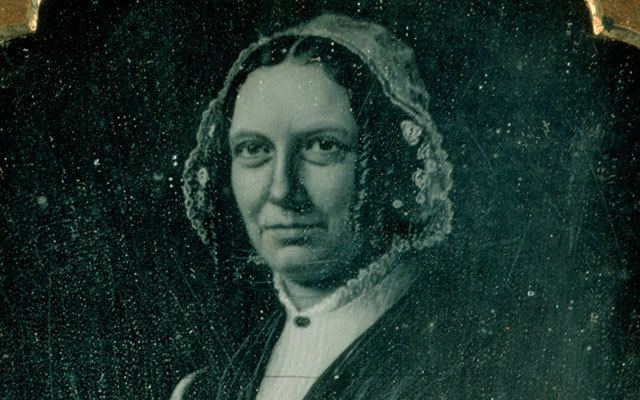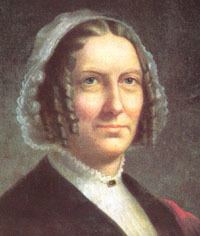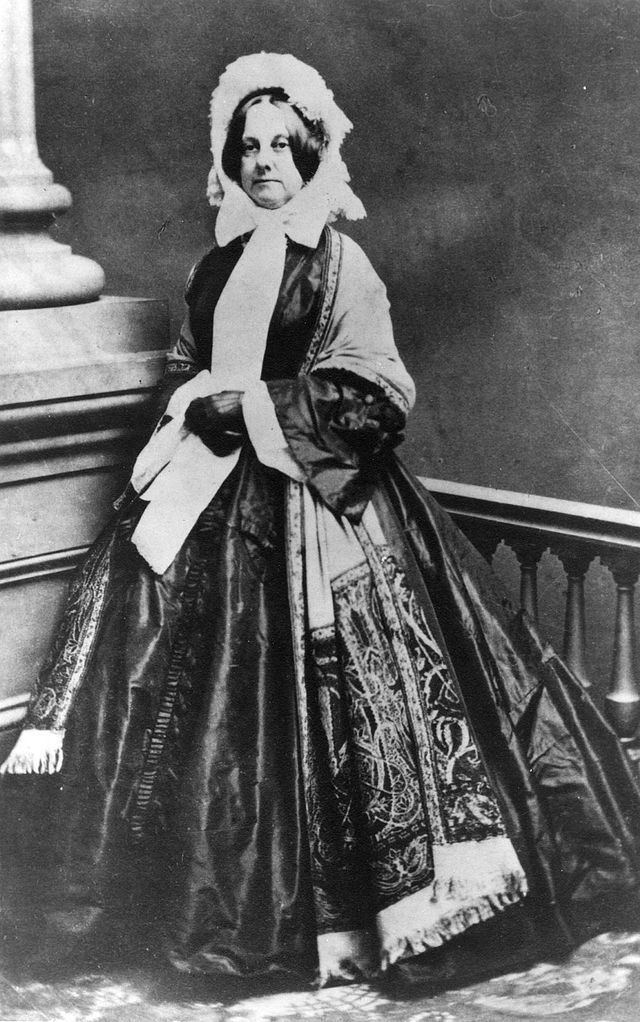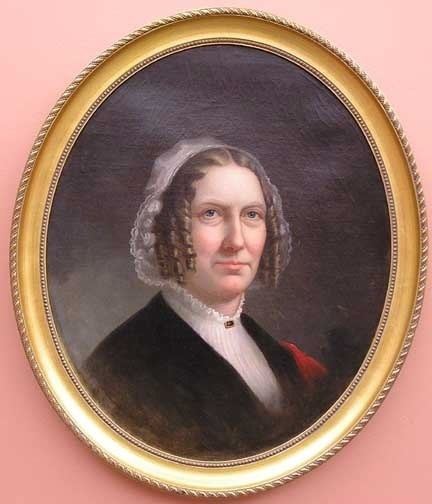Name Abigail Fillmore Signature | Resigned March 4, 1853 | |
 | ||
Succeeded by Mary Cyrene Burch Breckinridge Died March 30, 1853, Washington, D.C., United States Spouse Millard Fill (m. 1826–1853) Previous office First Lady of the United States (1850–1853) Children Mary Abigail Fill, Millard Powers Fill Similar People Millard Fill, Mary Abigail Fill, Millard Powers Fill, Caroline C Fill, Julia Gardiner Tyler | ||
First lady biography abigail fillmore
Abigail Powers Fillmore (March 13, 1798 – March 30, 1853), wife of Millard Fillmore, was First Lady of the United States from 1850 to 1853.
Contents
- First lady biography abigail fillmore
- 140 First Lady Abigail Fillmore White House Christmas Ornament
- Early life
- Education
- Career
- Marriage and family
- Political spouse
- First Lady of the United States
- Death
- References

140: First Lady Abigail Fillmore White House Christmas Ornament
Early life

Abigail was possibly born in Stillwater, New York, 1798, in Saratoga County. She was the daughter of the Reverend Lemuel Powers, a Baptist minister, and Abigail Newland-Powers. Abigail grew up in Moravia, New York, not far from the Fillmore farm. Her father died shortly after her birth. Her mother moved the family westward, thinking her scanty funds would go further in a less settled region, and ably educated her small son and daughter beyond the usual frontier level with the help of her late husband's library.
Education

After moving to Cayuga County, New York by wagon train, they moved in with Cyprus Powers because of their impoverished state. Her father left behind a large library of his personal books, and she was educated by her mother from this wealth of books. She came to love literature and also became proficient in other subjects such as math, government, history, philosophy, and geography. After finishing school she became a teacher and continued to teach after marriage, making her the first first lady to continue working after marriage.
Career

In 1814 Abigail became a part-time school teacher at the Sempronius Village school. In 1817 she becomes a full-time teacher and in 1819 she took on another teaching job and began to teach at the private New Hope Academy. Then, in 1824 she became a private tutor in Lisle to three of her cousins. She was then asked to open up a private school in Broome County, she opened the school, and in 1825, went back to Sempronius to teach in her original position.
Marriage and family

In 1819, she took a teaching post at the new academy in New Hope, where her oldest pupil was 19-year-old Millard Fillmore. The world of knowledge and Fillmore's steady progress in it drew them together, and gradually the relationship of teacher and student evolved into romantic attachment.
After a long courtship, Millard, aged 26, and Abigail, aged 27, were married on February 5, 1826, by the Reverend Orasius H. Smith at the home of the bride's brother Judge Powers in Moravia, New York. Without a honeymoon, they settled at East Aurora, New York. Mrs. Fillmore continued to teach school until the birth of her first son and maintained a lifelong interest in education. She shared her husband's love of books and helped build their personal library.
The Fillmores had a son and a daughter:
Political spouse
Attaining prosperity at last, Fillmore bought his family a six-room house in Buffalo, New York. Enjoying comparative luxury, Abigail learned the ways of society as the wife of a Congressman. She cultivated a noted flower garden; but much of her time, as always, she spent reading. In 1847 when Fillmore was elected New York State Comptroller the family temporarily moved to Albany, New York; their children were away in boarding school and college.
In 1849, Abigail Fillmore came to Washington, D.C. as wife of the Vice President. She thereby became the Second Lady of the United States.
First Lady of the United States
Sixteen months later, after Zachary Taylor's death at a height of sectional crisis, the Fillmores moved into the White House and she became First Lady.
Even after the period of official mourning, the social life of the Fillmore administration remained subdued. Suffering from an injured ankle that never properly healed Abigail couldn't stand for long periods of time at, pleading her delicate health, she entrusted many routine social duties to her younger daughter (who was known as Abby). Every Friday night the White House hosted a reception, where she had to stand for hours greeting and socializing with guests.
When Abigail first moved into the White House she was reportedly appalled at the fact that there was no library in it. With a special appropriation of $2,000 from Congress, she spent contented hours selecting books for a White House library. In the library was Shakespeare, history and geography books, and her piano, which she had taught herself to play. She invited writers such as William Thackeray, Charles Dickens, and Washington Irving to meet with her and performance artists like Jenny Lind, essentially creating a White House literary salon. "She was reportedly a witty and even erudite conversationalist, the most intellectual of the early first ladies."
When her husband was away he missed her and wrote her letters about politics, and she would write back offering him advice and counsel on political matters. In fact, he valued her opinion so much that he reportedly never made any important decision without first consulting her. Some history suggests that Abigail advised her husband not to sign the Fugitive Slave Act, which he did in the end sign, losing his nomination for a second term as Abigail predicted would happen if he signed the Act.
As first lady Abigail Fillmore left a legacy of women and work. As first lady the public was aware that she was educated and had worked as a teacher. They also knew about the library she created and that teaching is an honorable profession. Abigail paved the way for future women and future first ladies to receive an education and become teachers.
Death
Excited about their life post-presidency Abigail and Millard discussed traveling Europe in the months coming. At the outdoor inaugural ceremonies for Franklin Pierce in 1853, she caught a cold and the next day came down with a fever, which turned into bronchitis and then developed into pneumonia. At age 55 Abigail died just 26 days after leaving the White House, on March 30, 1853, at the Willard Hotel in Washington, D.C., the shortest post-Presidential life of any former first lady. Her sudden and quick death became the most widely reported death of a first lady. She was buried at Forest Lawn Cemetery in Buffalo, New York. The memorial stone was placed by the Abigail Fillmore Chapter, National Society Daughters of the American Revolution, of Buffalo.
On February 10, 1858, five years after her death, her husband married Mrs. Caroline Carmichael McIntosh, a wealthy Buffalo widow. They remained married until Millard's death on March 8, 1874.
